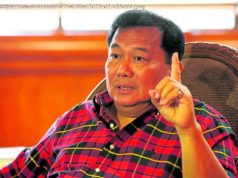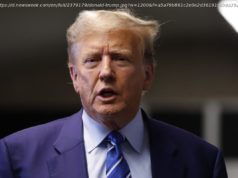#happybirthday #hashtag10 #taglife #blessed #yolo
It’s hard to imagine a time when we didn’ t use tagging systems to unify our social media worlds, but believe it or not, the hashtag has only been with us for 10 years.
Unlike many of the internet’s most foundational moments, the birth of the hashtag was caught on record, when developer Chris Messina, then a product designer at Google, tweeted out the idea to stick a pound sign (#, or “hash” in Brit-speak) in front of a word on August 23,2007:
A decade later, Twitter users alone generate 125 million hashtags a day, not counting similar hashtags on Instagram, Tumblr, Facebook, and other social media sites.
Hand in hand with the rise of social media itself, the hashtag has helped completely alter the way we use the internet. It’s not just that now we can giggle, “Hashtag blessed!” after every Instagram selfie we take. It’s not just that a viral hashtag can sometimes be literally life-changing — see the #IceBucketChallenge. It’s not even just that the distinction between online hashtags and real-life activism has become negligible — see #ArabSpring, #BlackLivesMatter, #OscarsSoWhite, #HeForShe, #MAGA, and so many more examples of hashtags converging with real political discussion and action. This last feature alone makes the hashtag one of the greatest developments of the modern internet.
But while much has been said about the hashtag’s ability to unite the internet around moments of real-life activism, it’s had other, less discussed but no less pervasive effects on our culture. Here are a few unique ways in which hashtags took over real life, gave communities a voice, and delivered unexpected results.
It’s probably not a coincidence that the number of Americans without a television set has risen alongside the use of social media. As TV ownership has decreased, the importance of social media as a connector during live events has increased monumentally. Where once a television set was our primary gateway to unfolding events in the world, the ability to follow live events more or less in real time via social media feeds has downgraded the necessity of a networked TV.
Gone are the days when a united culture gathered around a TV set to view footage of historical events as they were unfolding. If you’ re too young to remember, say, America watching the moon landing, perhaps you remember watching Mad Men ’s depiction of America watching the moon landing. Now we can just follow the #CuriosityRover hashtag.
Hashtags’ utility in uniting the world around live events via social media can’ t be overstated. Last year, for example, in a world that felt increasingly divided politically, the most popular hashtag had nothing to do with politics: It was #Rio2016, the universal hashtag for the Summer Olympics. And while live-tweeting reactions to televised events has become a huge part of the TV-watching experience, the hashtag also allowed those without TVs to follow along at home without feeling like they missed much.
And so it’s gone, from awards shows to election results: Don’ t have a TV or access to a live stream? Tune in to the hashtag, where someone’s bound to have GIFed that moment that made everyone wince, lol, or scratch their heads. (Remember Leonardo DiCaprio at the Golden Globes?) These days, it’s the viral reaction to a live event on social media that endures in our collective cultural memory — especially since, sometimes, watching the reaction to a television event via hashtag is much more entertaining than watching the event itself. Heck, an event doesn’ t even have to be televised for us to enjoy our collective internet rubbernecking. Thanks, hashtags.
In so many ways, Twitter, along with the now-defunct Vine, has served as a locus of black culture on the internet, a birthing place for expressions of sharp humor and sharp pain alike. But among the most notable features of Black Twitter is the increased visibility it’s given to a group of people who were largely without a distinct space on the web before hashtags gave them one: black geeks.
With the rise of social media, self-described blerds (black nerds) began carving out a space for themselves in geek communities where they’ d previously been largely isolated from one another. But as more people began to self-identify as fans and geeks, black fans sought ways to meet and congregate online, and hashtags became a tool to facilitate that congregation.
Jamie Broadnax’s @blackgirlnerds Twitter account — created in 2012 when she typed “black girl nerds” into a search engine and found zero results — has become ground zero for this community; its popularity has yielded a podcast, a website, and an upcoming all-inclusive fan convention. But the biggest unifier by far is Broadnax’s weekly community-centric viewing tags — dialectic hashtags intended for black fans to use to gather together and discuss their favorite TV shows. Blerd Twitter has birthed the popular hashtags #DemThrones and #ThronesYall for Game of Thrones, #DemDeads for The Walking Dead, #DeyWalking for Fear the Walking Dead, #DemClones for Orphan Black, and many more.
Though they’ re intended specifically for the black geek community, these weekly hashtags are closely followed by TV writers and producers. The resulting convergence of grassroots fandom activity and creator awareness has not only led to an explosion of black geek and pop culture blogs and communities but also contributed to the representation of these communities in shows like Sense8 and Luke Cage, which both embrace diversity and allow black characters to be geeks.
One of the quirkier instances of hashtags crossing over into real life is the instance of what Kanye West dubbed “hashtag rap” in a 2010 interview. The idea is the complete excision of figurative language, like metaphors and similes, in favor of the eliding of two ideas — much like in a tweet where a hashtagged ending alters the meaning of what came before it.
One of the most oft-cited examples of hashtag rap is this line from Bruno Mars’s “Gorilla, ” where he lays out the concept neatly:
The key to making the rhythm work is the dash in the middle — the momentary silence that not only gives the line rhythmic intensity but emphasizes the twist in the meaning of what came before.
Kanye’s coinage of the term was in reference to the line, “here’s another hit — Barry Bonds, ” from his 2007 “Barry Bonds.” But the trend found its voice with Lil Wayne’s verse on the 2008 T.






